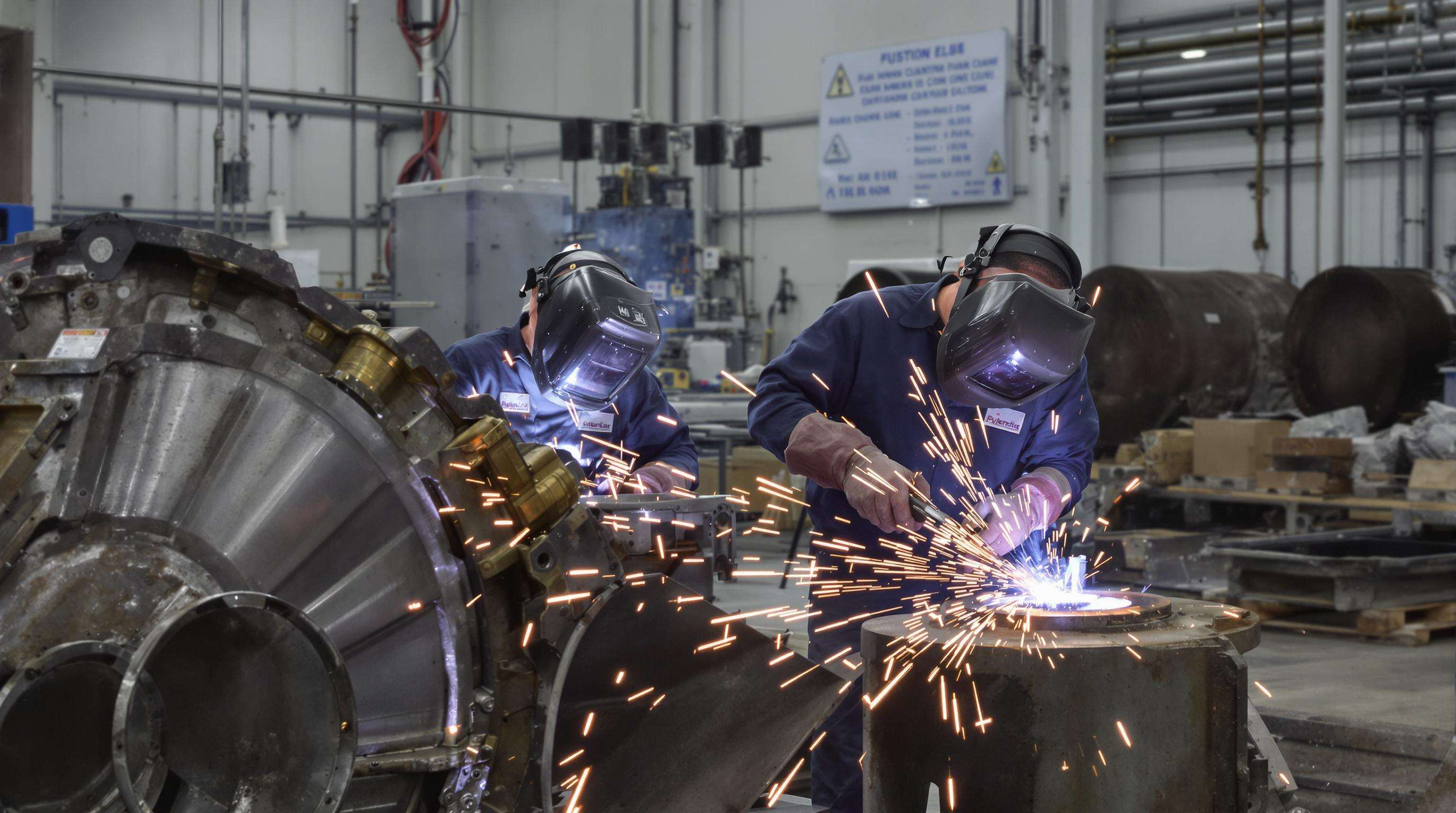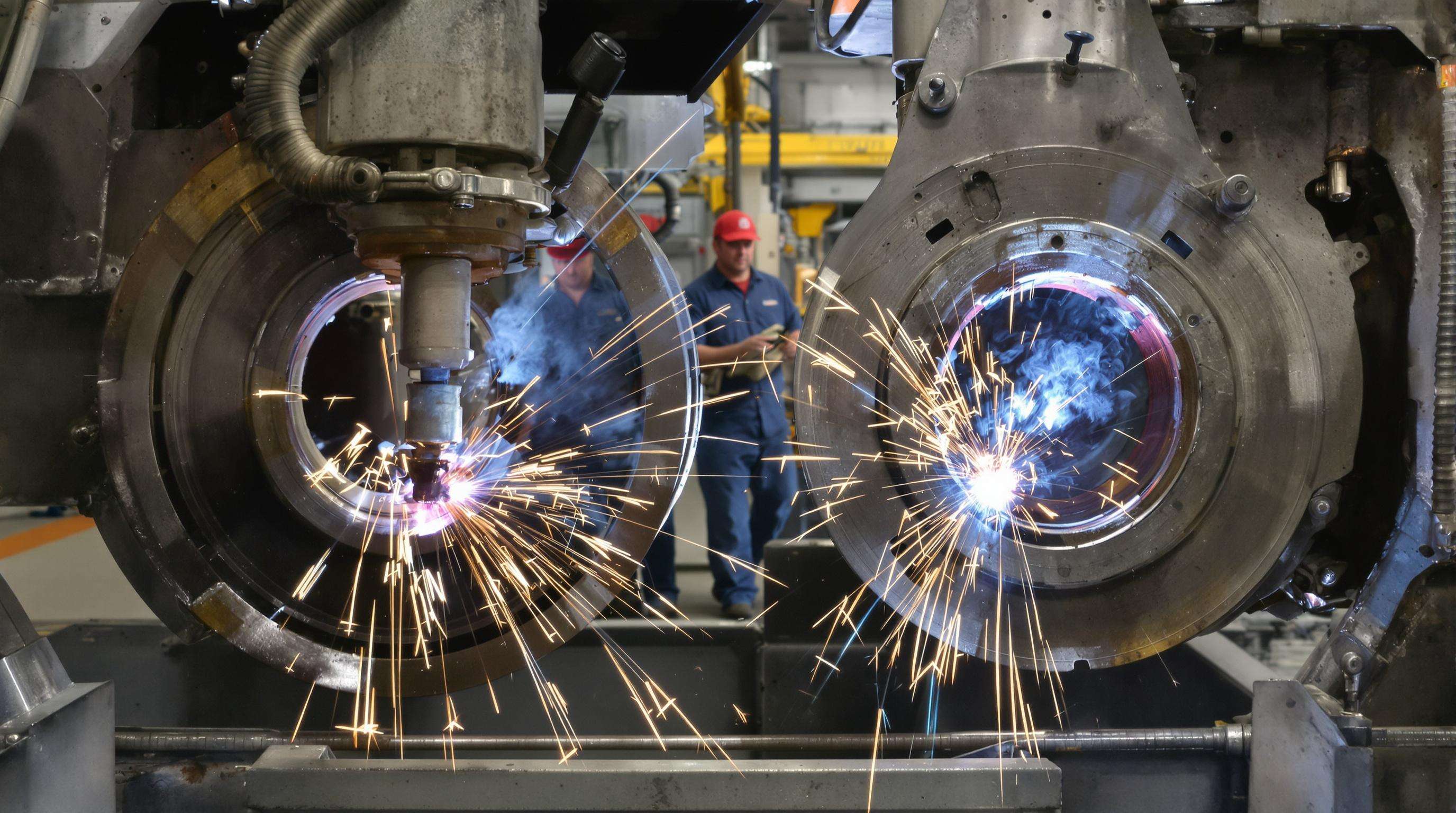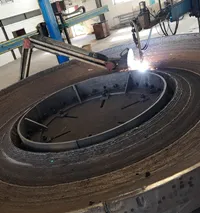Fundamentals of Hardfacing Wire and Stick Electrodes
Hardfacing extends equipment lifespan by welding specialized alloy layers onto components subjected to extreme wear, combating abrasion, impact, metal-to-metal contact, and corrosion across mining, cement, agriculture, and construction industries. Successful application hinges on matching consumables to three factors: base metal composition, predominant wear mechanism, and operational welding positions.
There are two major consumables dominating the hardfacing industry: flux-cored wires (FCAW) and stick electrodes (SMAW). Stick electrodes offer the most versatility from out-of-position to laying a root, for field construction work, maintenance, or ship building. Rather, hardfacing wires permit semi-automatic welding with much higher deposition efficiency but can only work in the flat/horizontal position because of the behavior of the molten slag.
Abrasion Resistance Comparison in Mining Applications
Mining equipment faces brutal abrasive wear from rock and ore contact. Studies reveal hardfacing wire deposits exhibit 25-34% lower mass loss than stick electrodes under ASTM G65 testing. This stems from flux-cored wires' refined carbide distribution within their iron-chromium matrices. Field trials demonstrate wire-hardfaced components require 40% fewer rebuilds annually.
Impact Resistance: Wire Hardfacing in Cement Industry Case Study
Cement plants documented improved performance switching to wire-processed hammer mills. GMAW-applied cobalt-chromium wire enhanced fracture toughness by 18% and thermal fatigue resistance. Rotary feeder blades treated with wire lasted 4,200 operational hours–exceeding stick-electrode results by 38%.
Metal-to-Metal Contact Performance Metrics
| Performance Indicator | Stick Electrode | Hardfacing Wire |
|---|---|---|
| CoF (Dry Conditions) | 0.51-0.62 | 0.33-0.41 |
| Adhesive Wear Severity | High | Moderate-Low |
| Galling Threshold (MPa) | <120 | 150-170 |
Hardfacing wire reduces friction heat generation by 28% in sliding contact applications like conveyor rollers. Under sustained friction, wire deposits retained 88% of their hardness after 500 operating hours versus 69% for stick electrodes.
Welding Process Efficiency: SMAW vs FCAW with Hardfacing Wire

Flux-cored arc welding (FCAW) delivers 3x higher deposition rates (12-18 kg/hr) versus stick electrodes (4-8 kg/hr). Continuous wire feeding eliminates electrode-changing interruptions, reducing labor costs in intensive applications like crusher roll refurbishment.
Deposition Rates – Wire (12-18 kg/hr) vs Stick (4-8 kg/hr)
FCAW's consistent deposition minimizes thermal cycling risks by completing weld layers faster. Field studies show 40% fewer passes are required for equivalent coverage, cutting energy costs by up to $11k annually for mining operations processing 500 tons/hour.
Operational Complexity Comparison
SMAW demands slag removal and electrode replacement every 50-60 seconds. FCAW maintains uniform arc characteristics with minimal spatter and reduced operator fatigue, though SMAW retains an edge in vertical/overhead welding.
Cost-Effectiveness of Hardfacing Wire for Long-Term Wear Protection

Consumable Costs Per Hour of Operation
Hardfacing wire achieves 60–75% lower labor costs per kilogram of deposited material. While wire costs 15–20% more per kilogram, the overall cost-per-hour drops by 40–55% due to faster project completion.
Equipment Downtime Reduction Analysis
Wire hardfacing decreases equipment downtime by 30–50% in mining operations compared to stick electrodes. Cement plant roll rebuilds using wire demonstrated 28% faster completion times, enabling 120+ additional production hours annually per machine.
Application Scenarios: When to Choose Hardfacing Wire Over Electrodes
Hardfacing wire excels in high-throughput, precision, or industry-specific wear resistance scenarios, reducing downtime by 35-50% in large-scale applications.
High-Volume Component Rebuilding Projects
Flux-cored hardfacing wire achieves deposition rates triple those of stick electrodes–ideal for rebuilding mining shovel teeth or cement mill liners.
Critical Wear Zones Requiring Precision
Wire feeders enable ±0.5 mm accuracy in applying chromium-carbide layers, maintaining <2% porosity in overhead welds on high-stress components.
Industry Paradox: Mining vs Agricultural Equipment Needs
| Factor | Mining (Wire Preference) | Agriculture (Electrode Use Cases) |
|---|---|---|
| Dominant Wear Type | Abrasion from silica-rich ore | Impact from soil/rock mixtures |
| Repair Frequency | Monthly | Biannual |
| Position Flexibility | 80% flat welding | 45% vertical/overhead |
Mining benefits from wire's hardness layers, while agriculture often requires stick electrodes for confined-space repairs–though wire adoption grows for components needing extended service life.
FAQ
What is hardfacing and why is it used?
Hardfacing is a welding process that applies a hard, wear-resistant material to a surface to extend equipment lifespan against abrasion, impact, metal-to-metal contact, and corrosion.
What are the key differences between hardfacing wire and stick electrodes?
Hardfacing wire offers higher deposition efficiency and is typically used for flat or horizontal welding, while stick electrodes offer more flexibility for out-of-position welding but with lower deposition efficiency.
In what industries is hardfacing commonly applied?
Hardfacing is commonly applied in mining, cement, agriculture, and construction industries where equipment is subject to extreme wear conditions.
How does hardfacing wire improve operational efficiency?
Hardfacing wire improves efficiency by allowing higher deposition rates, reducing labor costs, minimizing equipment downtime, and achieving faster project completion.

